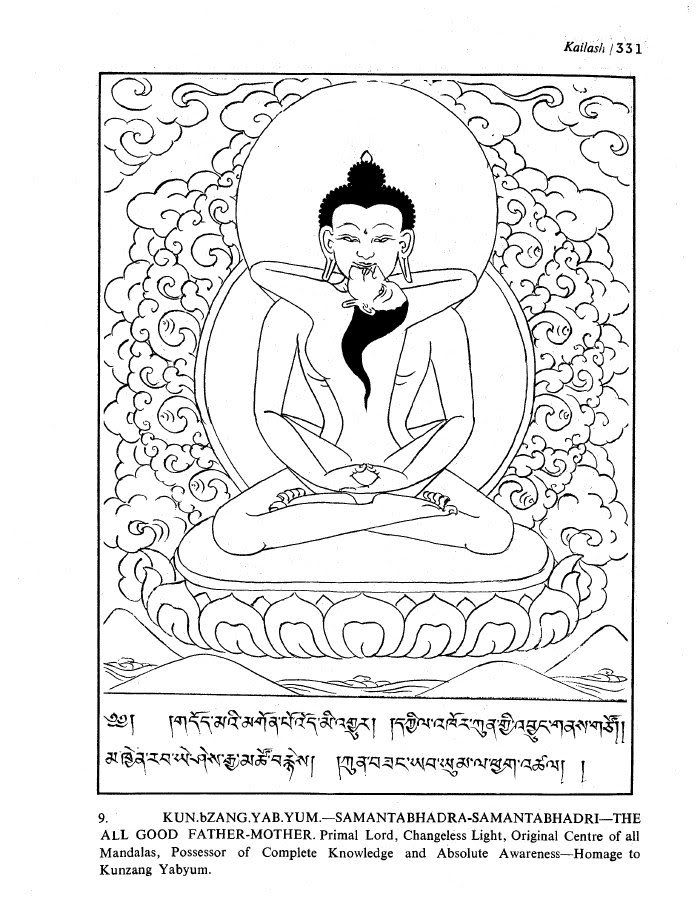Page 1 of 1
Question about Yab-Yum.
Posted: Fri Feb 03, 2012 5:21 am
by Distorted
Re: Question about Yab-Yum.
Posted: Fri Feb 03, 2012 8:51 am
by Pema Rigdzin
Guru Rinpoche is in the center of many Nyingma refuge trees because he is the founder of the Nyingma lineages. He brought the lineages of teachings that he had received from his gurus in India -and fully realized for himself- and established them in Tibet, where they flourished. He is in the central position because he embodies all enlightened gurus, and the guru is the heart of the path - in terms of outer guru who gives the ripening empowerments and liberating instructions, and the inner guru, one's true nature. On one level, the appearance of the guru yab yum signifies the union of compassionate method and wisdom; males (yab) represent method and females (yum) embody wisdom. Wisdom without compassionate method doesn't accomplish the great benefit of beings, and compassionate method without wisdom cannot benefit beings either, even if the intent and willingness to do so is there. Ultimately, both these aspects are naturally present within one's own true nature, so from that POV yab yum signifies not the union of compassionate method and wisdom, but their inseparability.
Re: Question about Yab-Yum.
Posted: Fri Feb 03, 2012 9:16 am
by Distorted
Pema Rigdzin wrote:Guru Rinpoche is in the center of many Nyingma refuge trees because he is the founder of the Nyingma lineages. He brought the lineages of teachings that he had received from his gurus in India -and fully realized for himself- and established them in Tibet, where they flourished. He is in the central position because he embodies all enlightened gurus, and the guru is the heart of the path - in terms of outer guru who gives the ripening empowerments and liberating instructions, and the inner guru, one's true nature. On one level, the appearance of the guru yab yum signifies the union of compassionate method and wisdom; males (yab) represent method and females (yum) embody wisdom. Wisdom without compassionate method doesn't accomplish the great benefit of beings, and compassionate method without wisdom cannot benefit beings either, even if the intent and willingness to do so is there. Ultimately, both these aspects are naturally present within one's own true nature, so from that POV yab yum signifies not the union of compassionate method and wisdom, but their inseparability.
Brilliant. I am going to chew on this for awhile and look for more on this. Thank you!





